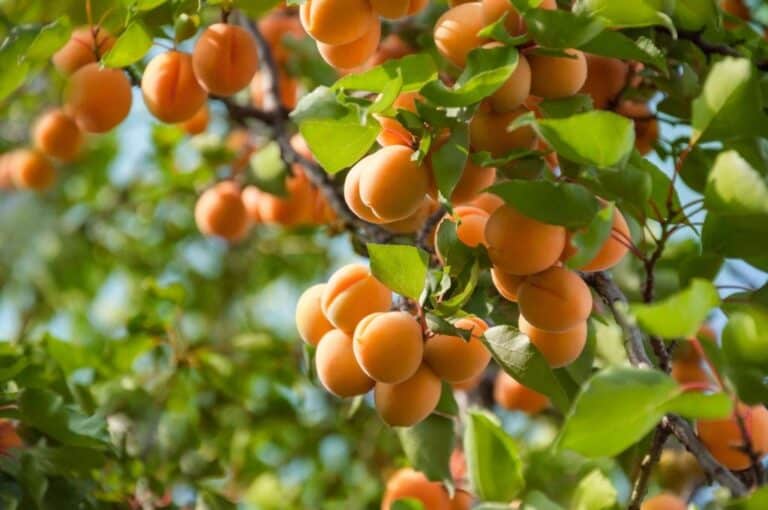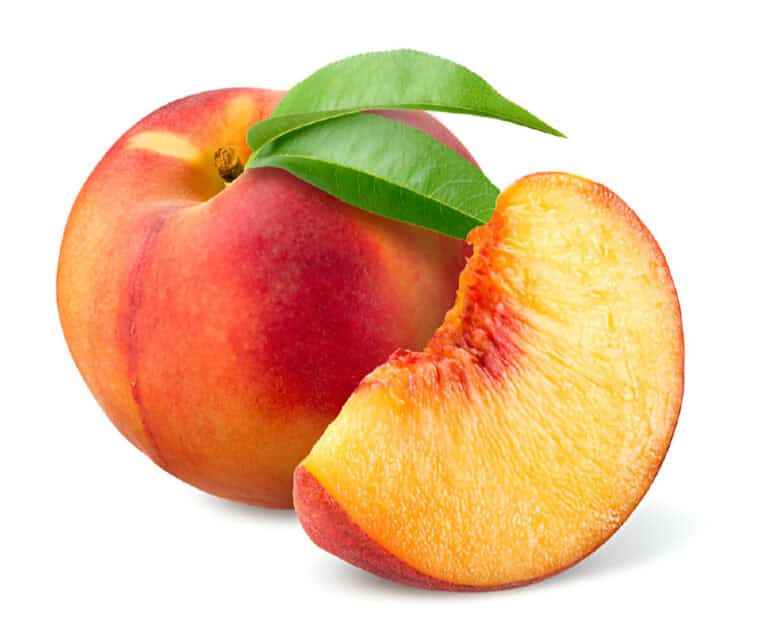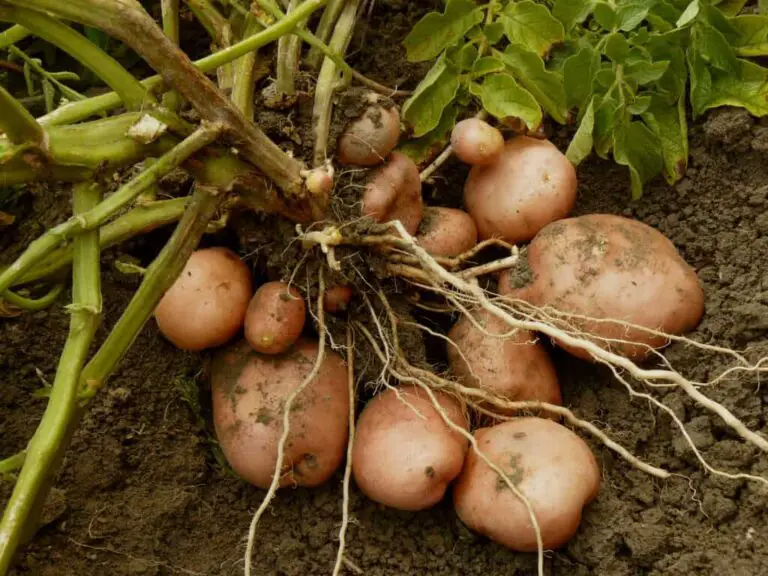Do Apricots Grow on Trees? The Fascinating Journey of Apricot Growth
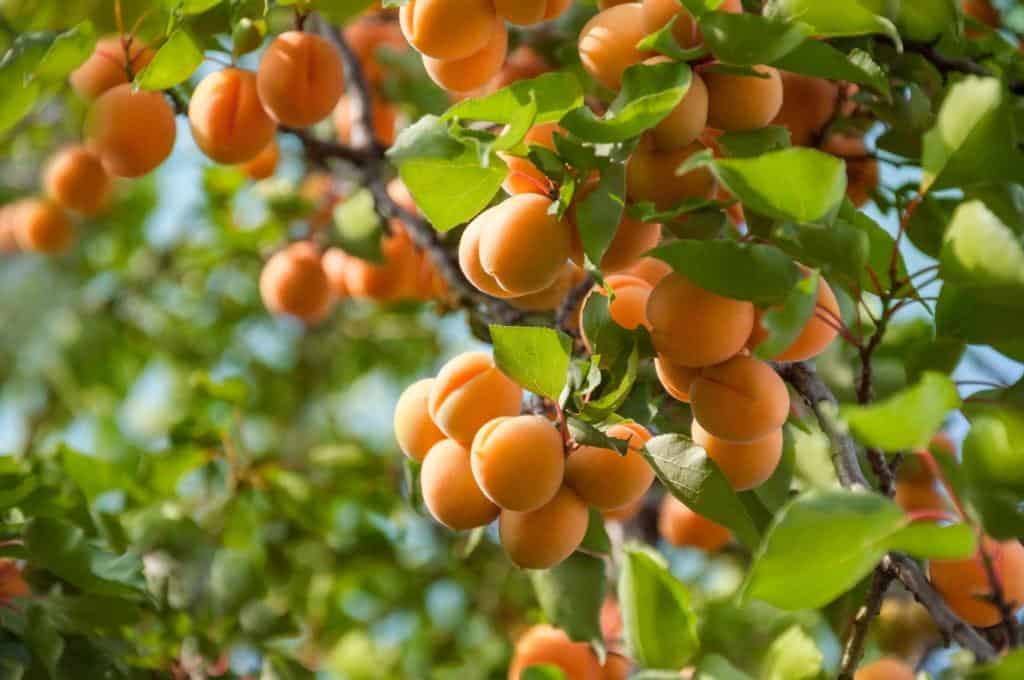
If you’ve ever savored the sweet, velvety flesh of an apricot, you might have found yourself pondering its origin. Do apricots grow on trees? The answer, my friend, is a resounding yes!
These little bursts of sunshine are indeed borne on the magnificent branches of apricot trees, painting orchards with their golden hues and tantalizing fragrance. In this article, we invite you on a journey through the enchanting world of apricot growth, where nature’s magic unfolds amidst blossoms and seasons.
Prepare to delve into the lifecycle of apricot trees, from their dormant slumber in winter to the symphony of blossoms in spring, and witness the transformation of tiny green fruits into succulent gems during the summer months. We’ll uncover the ideal conditions that these trees crave, explore the joy of harvesting ripe apricots, and even dive into the nutritional benefits they offer.
So, let’s set foot into this bountiful realm and discover the wonders that lie within apricot trees.
Introduction to Apricots
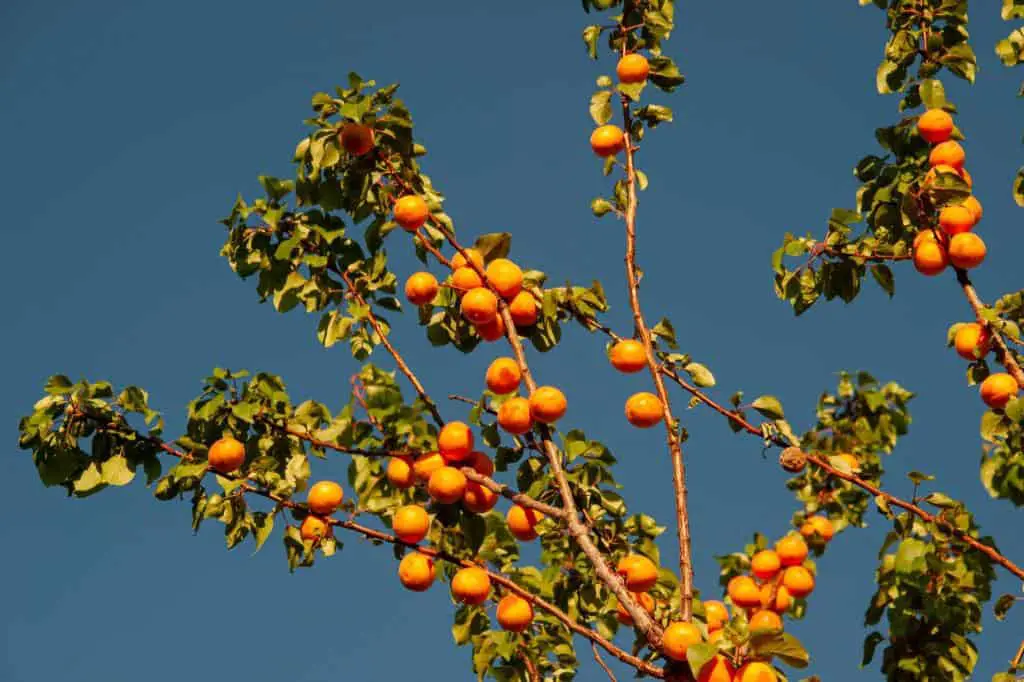
Apricots are small fruits that belong to the Rosaceae family, which also includes peaches, plums, and cherries. They originated in Central Asia and have been cultivated for thousands of years. Apricots have become a beloved ingredient in various cuisines worldwide, thanks to their versatile nature.
Apricots are a versatile ingredient in cooking that work well in both savory and sweet recipes. They can be enjoyed fresh, dried, or used in jams, pies, sauces, and salads. Additionally, apricots offer a host of health benefits, including being rich in vitamins A and C, fiber, and antioxidants.
Apricot trees are known for their ability to bear abundant fruit. They are generous providers, offering a harvest of delicious apricots year after year. However, like most fruit trees, apricots require specific growing conditions to thrive.
Do Apricots Grow on Trees?
Yes, apricots do indeed grow on trees. The process of apricot growth is truly fascinating. Apricot trees are known botanically as Prunus armeniaca. These beautiful trees can reach heights of up to 20 feet, with spreading branches that create a graceful canopy. The leaves of apricot trees are ovate in shape and a vibrant green color, adding to their visual appeal.
The apricot tree’s growth cycle begins with the emergence of delicate, fragrant blossoms in the spring. These blossoms, usually pale pink or white in color, dot the branches and create a breathtaking sight. Bees play a vital role in pollinating the flowers, facilitating the fertilization process, and ensuring the production of fruit.
Once the flowers are successfully pollinated, they transform into small, green fruit, which gradually matures over the summer months.
As the apricot fruit ripens, it undergoes a transformation in color, shifting from a vibrant green to various shades of yellow and orange, depending on the variety. The fruit becomes soft to the touch and develops its characteristic sweet aroma.
At this point, the apricots are ready for harvest. Gentle twisting or a slight tug is all it takes to separate the ripe fruit from the tree.
The Lifecycle of an Apricot Tree
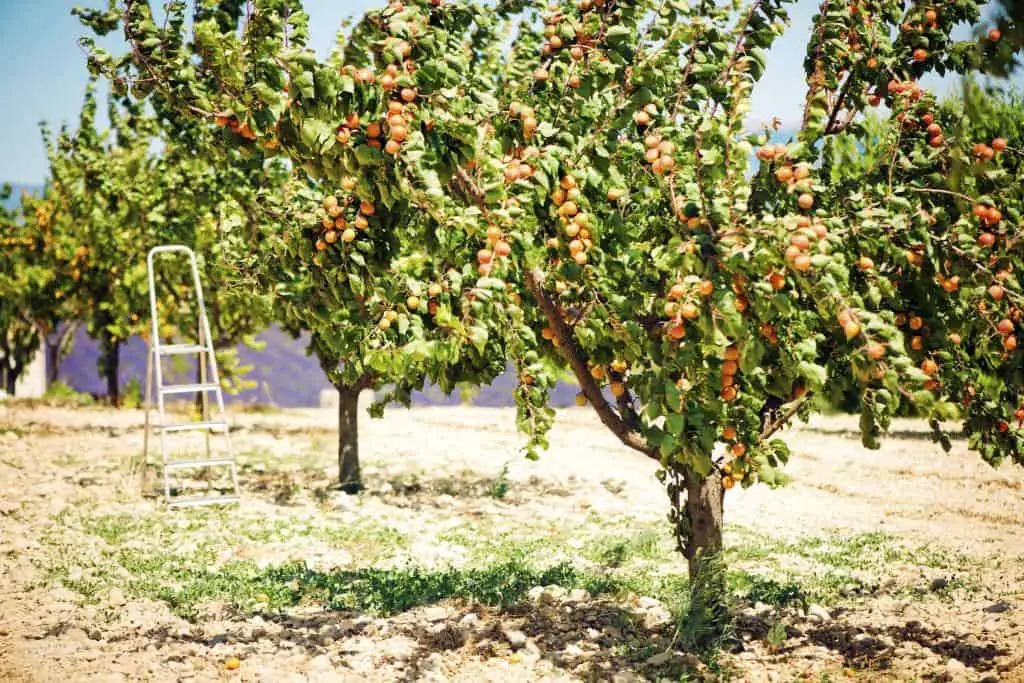
Like all fruit trees, apricot trees go through a remarkable life cycle. Let’s take a closer look at the different stages of an apricot tree’s growth:
1. Dormancy:
During the winter months, apricot trees enter a period of dormancy. This phase allows them to conserve energy and withstand the cold temperatures. It’s essential for the trees to receive a sufficient amount of chilling hours during this time to break dormancy and prepare for the upcoming growing season.
2. Blossoming:
With the arrival of spring, apricot trees burst into a spectacle of blossoms. The delicate, fragrant flowers cover the branches, attracting pollinators such as bees and butterflies. The blossoming period is relatively short, typically lasting for a couple of weeks.
3. Pollination:
Apricots are self-pollinating, or, for a better term, self-fertile plants. This means they can produce fruit with their own pollen. However, cross-pollination can result in higher fruit yields and better-quality fruit. Pollinators play a crucial role in transferring pollen from flower to flower, facilitating the fertilization process.
4. Fruit Set:
After successful pollination, the apricot tree begins the fruiting stage. Tiny green fruits start to develop and gradually grow larger. It’s during this period that thinning may be necessary to ensure proper spacing between fruits and avoid overcrowding.
5. Maturation:
As the summer progresses, the apricots undergo a transformation. They change from vibrant green to a warm golden hue, signaling their ripeness. The fruits become plump and juicy, ready to be harvested.
6. Harvesting:
The exact timing of apricot harvesting depends on the specific variety and growing region. Apricots are typically harvested in the summer months, between June and August. It’s essential to pick them when they are fully ripe but still firm to the touch. Overripe apricots tend to become mushy and lose their desirable texture and flavor.
Apricot Tree Characteristics
Apricot trees are deciduous and can grow to various sizes, depending on the variety and environmental conditions. Here are some key characteristics of apricot trees:
- Size: Apricot trees typically reach a height of 15 to 30 feet, with a spread of 15 to 25 feet. However, dwarf varieties are available for smaller spaces.
- Shape: The natural shape of apricot trees is spreading and rounded. They often develop an open canopy, allowing sunlight to penetrate the branches and promote fruiting.
- Foliage: The leaves of apricot trees are ovate, glossy, and dark green in color. They provide an attractive backdrop to the vibrant blossoms and fruits.
- Lifespan: With proper care, apricot trees can live for 20 to 30 years or even longer. However, their productivity may decline after the first 15 years.
It is important to pay attention to certain cultivation requirements when growing apricot trees.
Apricot Varieties and Their Characteristics
Apricots come in a range of varieties, each with its own unique characteristics. Here are some popular apricot varieties and their distinguishing features:
| Apricot Variety | Characteristics |
|---|---|
| Moorpark | Large, orange fruit with a sweet and tangy flavor |
| Goldcot | Medium-sized, golden-yellow fruit with a rich flavor |
| Blenheim | Small to medium-sized fruit with a balanced sweet-tart taste |
| Hungarian | Medium-sized, deep orange fruit with a rich flavor |
| Tilton | Medium-sized, orange fruit with a slightly tangy flavor |
These are just a few examples of the diverse apricot varieties available. When selecting apricots, consider your taste preferences and the intended use of the fruit.
Dwarf Varieties of Apricot Trees Suitable for Small Spaces
For those with limited gardening space or those keen on container gardening, dwarf apricot trees are a fantastic option. These compact varieties bring the joy of apricot cultivation to small gardens, balconies, or patios, offering a delightful solution for urban and space-conscious gardeners.
Imagine having your very own apricot tree in a cozy corner of your balcony! Dwarf apricot trees, such as the “Tilton” or “Pixzee” varieties, stand around 6 to 8 feet tall when fully matured, making them perfect for smaller areas. Their manageable size doesn’t compromise on the delicious fruit they produce, offering a convenient and space-efficient solution for fruit-bearing trees.
Here’s a quick comparison of popular dwarf apricot varieties:
| Variety | Mature Height | Suitable for Container |
|---|---|---|
| Tilton | 6-8 feet | Yes |
| Pixzee | 6-8 feet | Yes |
| Moorpark | 8-10 feet | Yes |
| Tomcot | 5-7 feet | Yes |
With these dwarf varieties, you not only get to enjoy the beauty of apricot blossoms but also the satisfaction of harvesting your own apricots, all within the confines of smaller living spaces. Happy gardening!
Apricot Tree Propagation Methods
There are several methods of propagating apricot trees, each with its advantages and disadvantages. Here are two common methods:
- Seed Propagation: Apricots can be grown from seeds, which are extracted from the fruit. However, keep in mind that apricots grown from seeds may not inherit the exact characteristics of the parent tree. They can also take longer to bear fruit.
- Grafting: Grafting is a popular method used to propagate apricot trees while preserving the desired traits of a specific variety. It involves joining a scion (a small piece of the desired apricot variety) to a rootstock (a compatible apricot tree with a strong root system). This method ensures that the new tree inherits the desired traits and can start bearing fruit more quickly.
Grafting offers several advantages, such as faster fruiting, consistent fruit quality, and disease resistance. However, it requires some knowledge and skill to perform successfully.
Planting and Caring for Apricot Trees
To establish healthy apricot trees that yield abundant fruit, proper planting and care are essential. Follow these steps for successful apricot cultivation:
- Site Selection: Choose a location that receives full sun for at least six hours a day. Ensure the soil is well-draining to prevent waterlogged roots, which can lead to root rot.
- Soil Preparation: Apricots thrive in loamy soil with a pH range of 6.0 to 7.5. Before planting, amend the soil with organic matter, such as compost or well-rotted manure, to improve fertility and drainage.
- Planting Process: Dig a hole slightly larger than the rootball of the tree. Place the tree in the hole, ensuring the bud union (the swollen area where the scion is grafted onto the rootstock) sits above the soil level. Backfill the hole, gently firming the soil around the roots.
- Irrigation: Newly planted apricot trees require regular watering to establish a healthy root system. Water deeply but infrequently, ensuring the soil is evenly moist. As the tree matures, adjust the watering based on weather conditions and soil moisture levels.
- Fertilization: Apricot trees benefit from annual fertilization to support growth and fruit production. Apply a balanced fertilizer in early spring and mid-summer, following the package instructions for application rates.
- Pruning: Prune apricot trees during their dormant season (late winter or early spring) to remove dead or damaged branches and maintain an open canopy structure. This promotes air circulation, sunlight penetration, and healthy fruit development.
By following these guidelines, you can create an optimal growing environment for your apricot trees and ensure a bountiful harvest.
Common Apricot Tree Diseases and Pests
Like any plant, apricot trees can be susceptible to certain diseases and pests. It’s important to be aware of these issues to prevent and manage them effectively. Here are some common diseases and pests that can affect apricot trees:
| Disease/Pest | Description | Prevention and Treatment |
| Brown Rot | Fungal disease that causes rotting of fruits and cankers on branches | Ensure good air circulation and remove infected fruits and branches. Apply fungicides when necessary. |
| Peach Leaf Curl | Fungal disease that causes curling and distortion of leaves | Apply copper-based fungicides during the tree’s dormant stage. |
| Aphids | Small insects that suck sap from leaves and young shoots | Use insecticidal soaps or neem oil. Encourage beneficial insects that prey on aphids. |
| Codling Moths | Larvae of these moths tunnel into fruits, causing damage | Install pheromone traps and remove infected fruits. Apply insecticides at appropriate times. |
| Spider Mites | Tiny mites that feed on plant sap, causing leaves to turn yellow and develop webbing | Spray affected foliage with water or use insecticidal soaps. |
By implementing preventive measures such as proper sanitation, regular inspection, and maintaining tree health, you can minimize the occurrence of these diseases and pests. If an infestation does occur, timely treatment with appropriate methods will help protect your apricot trees.
Harvesting and Storing Apricots
To get the most flavor out of apricots, you need to know when to pick them. Here are some signs that indicate apricots are ready for harvest:
- The fruit develops a rich color, ranging from yellow to orange, depending on the variety.
- The flesh of the apricot becomes slightly soft when gently squeezed.
- The fruit easily detaches from the stem with a gentle twist.
To harvest apricots, hold the fruit gently and twist it until it separates from the stem. Avoid pulling or tugging, as it may damage the tree or the fruit itself. It’s best to harvest apricots when they are fully ripe, as they do not continue to ripen after being picked.
After harvest, proper handling and storage are essential to maintain the quality of apricots. Here are some tips:
- Handle the fruit carefully to prevent bruising or damage.
- Store apricots in a cool, well-ventilated area, ideally between 32-40°F (0-4°C).
- Place them in a single layer to avoid crushing or spoiling of fruits.
- If you have an abundance of apricots, consider freezing, canning, or drying them to preserve their flavors for future use.
By following these guidelines, you can enjoy the taste of freshly harvested apricots even beyond the harvest season.
Conclusion
Apricots indeed grow on trees and offer a delightful experience for both culinary enthusiasts and nature lovers. From understanding common diseases and pests to harvesting techniques, culinary uses, traditional medicinal value, and exploring different varieties, there’s much to appreciate about these versatile fruits. So, whether you plan to enjoy them fresh, in baked goods, or explore their health benefits, apricots are a true delight that nature has bestowed upon us.
FAQs
How long does it take for an apricot tree to bear fruit?
An apricot tree typically takes around 2 to 4 years to bear fruit after planting, depending on the specific variety and growing conditions.
Can I grow apricot trees in containers or pots?
Yes, apricot trees can be successfully grown in containers or pots. However, it’s essential to choose a dwarf or semi-dwarf variety suitable for container gardening and provide proper care, including regular watering and adequate sunlight.
Can apricot trees tolerate cold temperatures?
Apricot trees have some tolerance for cold temperatures. They require a certain amount of chilling time during the winter to break dormancy and set fruit. However, extremely cold temperatures can damage the tree, so it’s important to select varieties that are suitable for your specific climate zone.
Do apricot trees require a lot of sunlight to grow?
Yes, apricot trees thrive in full sunlight exposure. They require at least six to eight hours of direct sunlight per day to produce quality fruit. Adequate sunlight promotes vigorous growth, optimal fruit development, and overall tree health.
Can I grow apricot trees in regions with a colder climate?
Apricot trees prefer regions with a continental climate, characterized by hot, dry summers and cold winters. However, certain apricot varieties have been bred to be more cold-hardy, allowing them to be grown in regions with colder climates. It’s important to choose varieties specifically suited to colder regions and provide extra protection during harsh winters.
What are some popular apricot varieties known for their flavor?
Some popular apricot varieties known for their exceptional flavor include ‘Moorpark,’ ‘Goldcot,’ and ‘Blenheim.’ ‘Moorpark’ apricots are renowned for their rich flavor and orange flesh. ‘Goldcot’ is prized for its early ripening and sweet taste. ‘Blenheim’ apricots are versatile and well-suited for both fresh consumption and canning, offering a delightful balance of sweetness and acidity.

